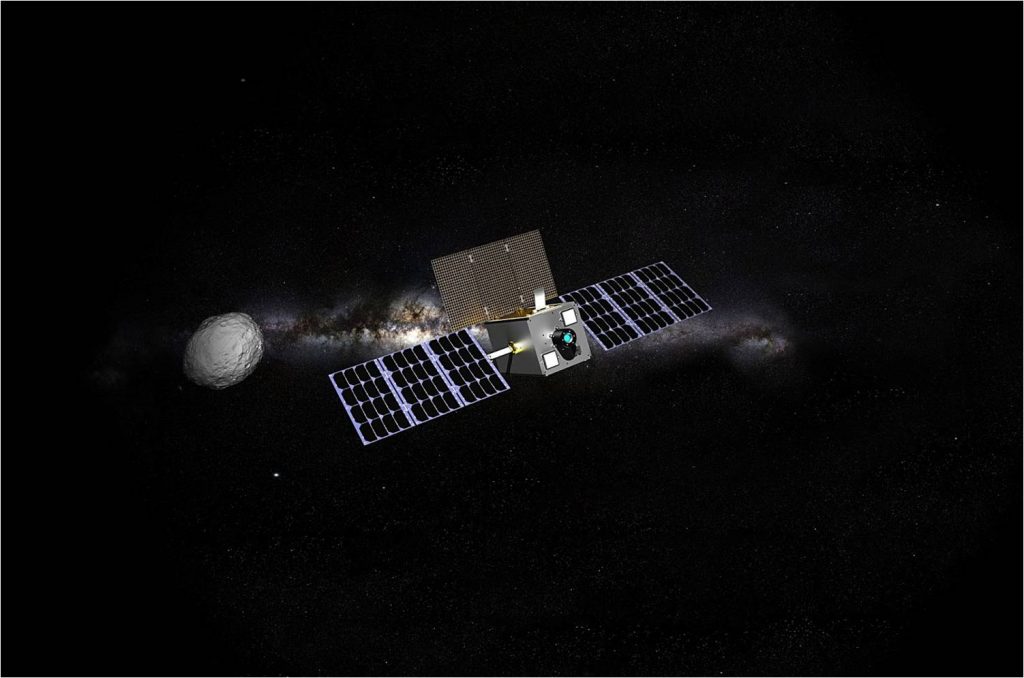Do CubeSat Cameras Improve Earth Observation Capabilities? Does a CubeSat camera have the power to improve our Earth observation capabilities? Or are they just another overhyped technology? In this article, we will look at the cameras for CubeSat, including how they are currently being used and the unique benefits they offer!
What Is a CubeSat Camera?
A camera for CubeSat is a camera that is attached to a nanosatellite that weighs up to 1.33kg per unit and has a typical cube dimension of 10 cm x 10 cm x 10 cm. CubeSats were invented in 1999 at Cal Poly after scientists asked their students to create a satellite that could fit into a shoebox.
CubeSat cameras are unique because of their tiny size and the fact they are made from off-the-shelf parts. Standard CubeSat cameras for Earth monitoring feature a solar panel, battery, imager, and processor. They can be produced much faster and cheaper than traditional satellite cameras. Even though they may not be as accurate as large satellite cameras, we will show you why they can outperform their big brother!
What types of CubeSat cameras exist? There is a range of different options which differ based on their mass, GSD (size of each pixel), swath (area of Earth that the camera can photograph), and type of images it can take (RGB, Video, Multispectral, and Hyperspectral). Cameras with a high swath tend to have a lower GSD and vice versa.
How Does a CubeSat Camera Work?
A CubeSat first needs to be launched into orbit. To get to space, it hitches a ride on a rocket and is then released into space. Once it has made it into low Earth orbit, it starts scanning back and forth, taking images. It uses the Sun’s radiation reflected from the Earth to capture images. These images are then sent back to Earth via an antenna using the Deep Space Network. Researchers then feed these raw images into a computer that can put them together into nice readable images.
What Applications Do CubeSat Cameras Have?
<img alt=”CubeSat and Earth Observation”>
CubeSat cameras have many commercial and research applications, from soil monitoring and mining to agriculture and climate monitoring. Researchers believe that CubeSat Earth observation can play a key role in improving our global water and food supply and help heal the climate.
CubeSat cameras are helping farmers increase the success of their harvest. They can show nitrogen levels, soil moisture, yield prediction, vegetation indices, and more. Thanks to these cameras, farmers can save money on fertilizers, improve their yield and determine where and what they should plant more accurately.
CubeSat cameras can help governments manage their water supply more efficiently. They are being used to accurately predict rainfall and measure the amount of water being washed away. This is especially important in remote areas where on-site monitoring is not possible. CubeSat spacecraft are playing an important role in predicting floods and droughts.
CubeSats are being used to monitor and predict natural disasters. They can detect shifts in the ground formation surrounding volcanoes and see changes in temperatures. These are two major signs of upcoming volcanic eruptions. CubeSat spacecraft are also being used to survey the damage post a natural disaster and can help governments to re-organize cities and towns so they are not impacted by the next disaster.
These are just some of the use cases of CubeSat spacecrafts for Earth observation. These applications are only going to grow and become more advanced. CubeSat cameras have the potential to make the Earth a much safer and more prosperous planet!
Why Are CubeSat Cameras for Earth Observation Superior to other Satellite Cameras?
Even though traditional satellite cameras are more accurate, a CubeSat camera’s capability is superior because of the low manufacturing cost and fast manufacturing process. Also, due to their lightweight design, they can be bundled together and launched at the same time, which significantly shrinks launch costs. Low costs and quick build times allow agencies and companies to launch a constellation at a fraction of the cost of launching one large satellite. A constellation of CubeSats can then work in unison to provide researchers with a wide range of images of the Earth with a massive swath while still maintaining a low GSD. As CubeSats are so lightweight and mostly made from off-the-shelf parts, maintenance and replacement costs are much lower than standard satellites. This allows scientists to easily constantly monitor the Earth!
CubeSat cameras are already playing an important role in monitoring the Earth. They are being used to monitor climate change, population growth, water, and food distribution, and even economic activity. Thanks to their multiple applications and low cost, CubeSats are a major driving force behind the new space golden age.
Also Read about Satellite vs. Cable TV





